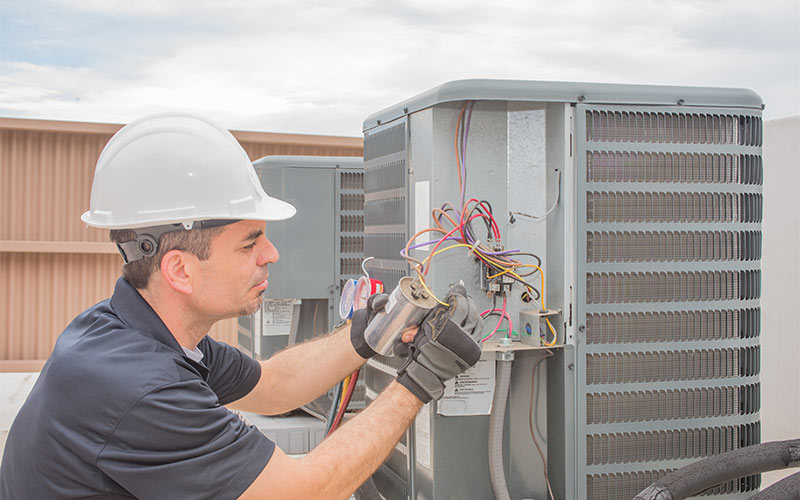
If you live in areas with more extreme temperature changes, chances are you have a small box attached to one of your inside walls where you can control the temperature inside your home. While this may seem like a magical contraption, this is part of an HVAC system, which is integral for maintaining a comfortable and livable home.
Table of Contents
What Is HVAC
Despite what many may think, HVAC does not refer to anything related to vacuums. Instead, HVAC stands for Heating, Ventilation, and Air Conditioning and refers to the system that circulates temperature-controlled air throughout your home. However, keep in mind that HVAC is not just for personal and residential use. In the commercial setting, the HVAC acronym may have an R added at the end to become HVAC/R. The R stands for refrigeration, which is a common need in the industrial and commercial sectors.
How HVAC Works
You may have wondered exactly how this system works. Contrary to popular belief, most HVAC systems do not cool a house by simply blowing cold air into the area. Instead, warm air from inside the home is pulled out of the house through the ductwork system. Instead of being pumped outside, it stays within the HVAC system and is pushed over a coil that absorbs the heat from the air, making the air feel cool. Now, the indoor fan blows the cold air back into the home’s ducts and pumps it throughout the home. This air circulation method helps to provide cooler temperatures quickly and efficiently within the home or business. Most people consider AC installation a must in their home, as other cooling systems aren’t as successful in cooling a house.
The most common indoor heating systems require a furnace. Cold air inside the home or business is pulled into the furnace and heated. Then a fan from inside the furnace blows the heated air back through the ductwork into the home or business. This cycle continues until the area reaches the requested temperature, which is when the furnace shuts off and the cycle is paused.
Elements of an HVAC System
While relatively simple, an HVAC system consists of more than an AC unit, furnace, and fans. It also includes an air exchanger, ductwork, and the classic thermostat.
An air exchanger does exactly what it sounds like. It exchanges “stale” air for filtered “fresh” air. This helps prevent allergens from entering your home while maintaining a fresh feel inside the home as well. Whether they are transporting inside air out to be heated or cooled or pushing temperature-controlled air into the home, ductwork and vents are what allow the HVAC to function effectively.

Finally, the trusty thermostat. This is the piece of equipment that allows you to control the temperature inside your place while remaining within your home. Over time, these have updated from analog dials on your wall, to digital thermostats that require a push of a button, to modern homes adopting smart thermostats. Smart thermostats connect to your home’s Wi-Fi, allowing you to control the home temperature from your phone or a home system like Alexa. You can create programs and set schedules as to when you would like the air conditioner to run, or program a temperature that you would like the house to maintain while you are away. In the end, while pricey on the front end, smart thermostats can help save you money by reducing HVAC system use when you do not require it to be running.
HVAC Services vs. Maintenance
Despite what you may think, there is a difference between service and maintenance when it comes to an HVAC system. HVAC services are requested when there is a recognized issue with your unit. If you hear an unusual noise when the unit is running, your thermostat is not maintaining a consistent temperature, or notice that your energy costs have increased an abnormal amount from years past, it may be time to call an experienced technician near you.
However, maintenance refers to routine check-ups that should be completed on your unit, typically on a bi-annual basis. This not only increases the longevity and efficiency of your unit but also assists in reducing energy costs. Preventative maintenance often includes cleaning the coils and other dust-prone parts, testing safety systems, and lubricating moving parts.
Final Thoughts
While initially expensive, an HVAC system is a necessary part of modern homes and businesses. With several working parts, it takes a trained technician to identify the problem and provide the necessary fixes to your system. In addition to having temperature-controlled air, with HVAC, you can feel confident that your air has been properly filtered to minimize allergens as well.
